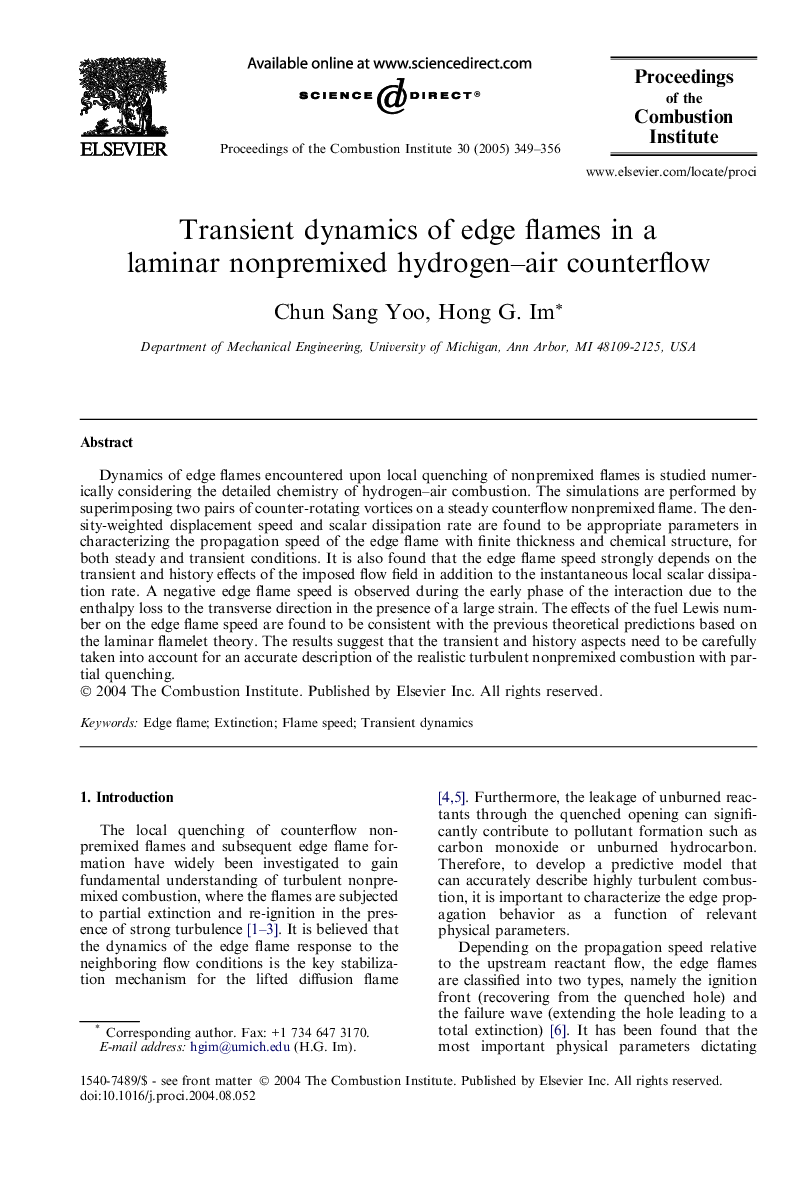| Article ID | Journal | Published Year | Pages | File Type |
|---|---|---|---|---|
| 9637353 | Proceedings of the Combustion Institute | 2005 | 8 Pages |
Abstract
Dynamics of edge flames encountered upon local quenching of nonpremixed flames is studied numerically considering the detailed chemistry of hydrogen-air combustion. The simulations are performed by superimposing two pairs of counter-rotating vortices on a steady counterflow nonpremixed flame. The density-weighted displacement speed and scalar dissipation rate are found to be appropriate parameters in characterizing the propagation speed of the edge flame with finite thickness and chemical structure, for both steady and transient conditions. It is also found that the edge flame speed strongly depends on the transient and history effects of the imposed flow field in addition to the instantaneous local scalar dissipation rate. A negative edge flame speed is observed during the early phase of the interaction due to the enthalpy loss to the transverse direction in the presence of a large strain. The effects of the fuel Lewis number on the edge flame speed are found to be consistent with the previous theoretical predictions based on the laminar flamelet theory. The results suggest that the transient and history aspects need to be carefully taken into account for an accurate description of the realistic turbulent nonpremixed combustion with partial quenching.
Related Topics
Physical Sciences and Engineering
Chemical Engineering
Chemical Engineering (General)
Authors
Chun Sang Yoo, Hong G. Im,
